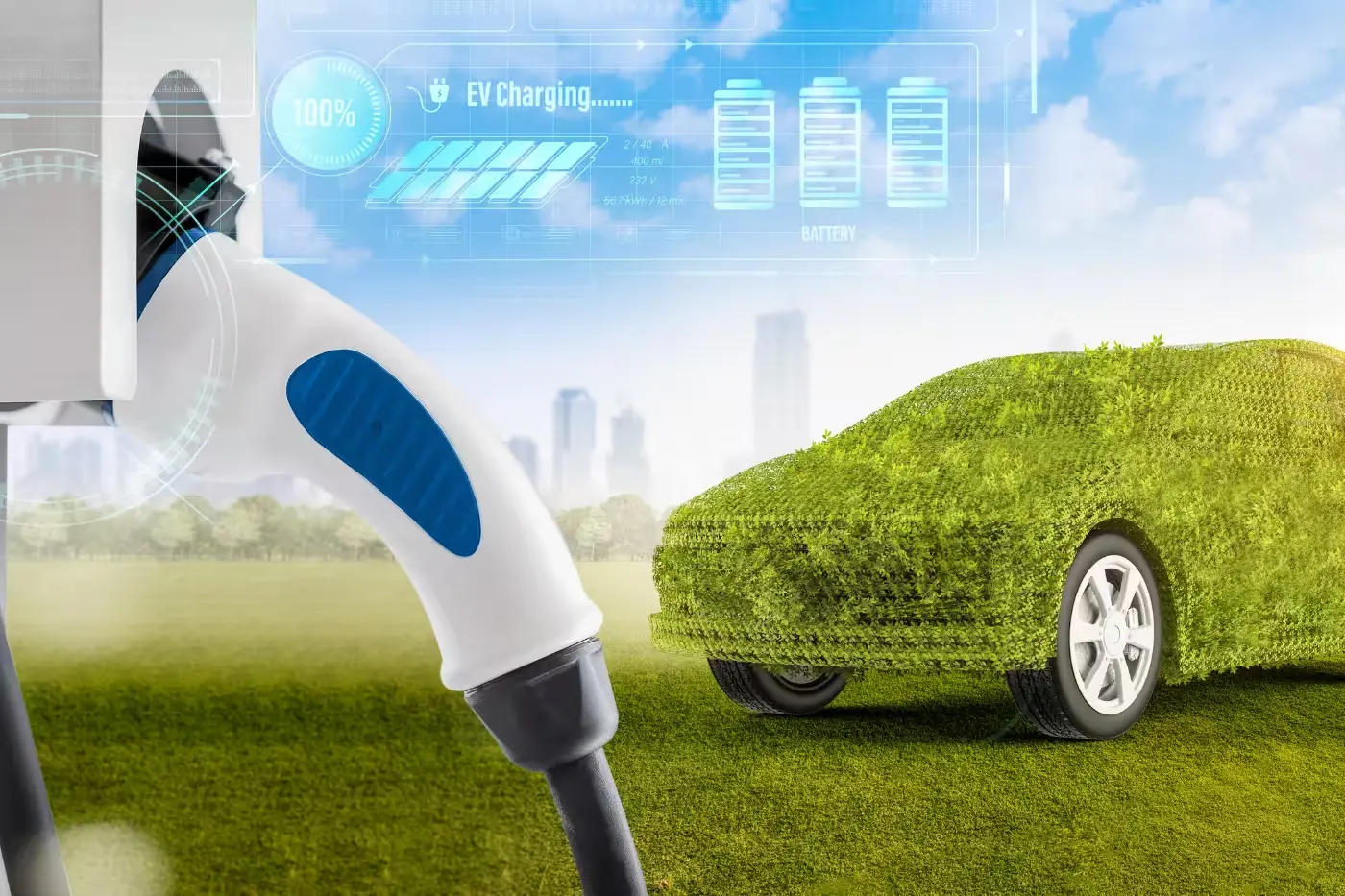The evolution of electric vehicles (EVs) is a fascinating journey that mirrors the advancement of technology, environmental awareness, and changes in societal norms.
From the first rudimentary electric carriages to the sophisticated, high-performance EVs of today, the path of electric mobility is marked by innovation, setbacks, and remarkable progress.
A Brief History of Electric Vehicles
The Early Days: 19th Century Beginnings
The concept of electric vehicles is not as modern as some might assume. The roots of EV technology can be traced back to the 19th century. In 1828, Hungarian inventor Ányos Jedlik created a small-scale model of a vehicle powered by a simple electric motor. By the 1830s, Robert Anderson of Scotland had developed a crude electric carriage fueled by non-rechargeable primary cells.
The first practical electric cars were developed in the late 1800s. Thomas Parker, a British inventor, is credited with building the first production electric car in London in 1884. By 1897, electric taxis started operating in London under the City and Suburban Electric Carriage Company.
Rise and Fall: Early 20th Century
At the turn of the 20th century, electric vehicles enjoyed a period of popularity. In 1900, EVs accounted for approximately one-third of all vehicles on the road in the United States. They were favored for their quiet operation and ease of use, especially among urban drivers. However, the advent of the internal combustion engine (ICE) and the mass production techniques pioneered by Henry Ford led to a decline in the popularity of EVs.
The launch of the Ford Model T in 1908, with its affordable price and extended range, marked the beginning of the end for early electric vehicles. By the 1920s, the infrastructure for gasoline-powered cars improved significantly, and EVs were largely phased out from mainstream use.
The Revival: Late 20th Century to Early 21st Century
The Environmental Wake-Up Call
The oil crises of the 1970s ignited renewed interest in alternative fuel vehicles, including EVs. Concerns over air pollution, oil dependency, and environmental degradation prompted regulatory authorities and automakers to explore cleaner vehicle technologies.
In 1990, the California Air Resources Board (CARB) introduced the Zero Emission Vehicle (ZEV) mandate, requiring automakers to produce a certain number of zero-emission vehicles if they wanted to continue selling cars in California. This regulation spurred research and development in electric vehicle technology.
Enter the EV1
One significant milestone in the revival of electric vehicles was General Motors’ (GM) introduction of the EV1 in 1996. The EV1 was the first mass-produced, purpose-designed electric car from a major automaker. Although the program was short-lived—GM discontinued and recalled the EV1 by 2003—the vehicle demonstrated the potential for EVs in the modern era.
Rise of New Players: Tesla and the Modern Era
The true renaissance of electric vehicles began in the 2000s, driven by technological advancements, environmental policies, and the rise of new market players. Tesla Motors, founded in 2003 by Martin Eberhard and Marc Tarpenning (with Elon Musk joining shortly thereafter), played a pivotal role in transforming EVs from niche products to mainstream contenders.
In 2008, Tesla launched the Roadster, an electric sports car with a range of over 200 miles on a single charge—a significant breakthrough at the time. This was followed by the release of the Model S in 2012, which set new standards for electric cars in terms of range, performance, and luxury.
Current State of Electric Vehicles
Market Growth and Adoption
Electric vehicles have seen exponential growth over the past decade. According to the International Energy Agency (IEA), the global stock of electric cars surpassed 10 million in 2020, a 43% increase from the previous year. This growth is driven by falling battery costs, supportive government policies, and increased consumer awareness of environmental issues.
China is the largest market for electric vehicles, accounting for 41% of global EV sales in 2020. Europe follows with a 42% share of global sales, driven by stringent emission regulations and attractive incentives for EV buyers. The United States, while lagging behind China and Europe, saw a significant increase in EV sales, with a market share of about 2.5% in 2020.
Technological Advancements
Modern electric vehicles are a testament to the rapid advancements in technology. Lithium-ion batteries, the heart of EVs, have seen significant improvements in energy density, charging speed, and cost. According to , the cost of lithium-ion batteries has fallen by 89% since 2010, reaching an average of $133 per kilowatt-hour (kWh) in 2024 and projected to $80 per kWh by 2030. This cost reduction has made EVs more affordable and competitive with conventional vehicles.
Autonomous driving technology and connected car features are also becoming more prevalent in electric vehicles. Tesla’s Autopilot, GM’s Super Cruise, and various Advanced Driver Assistance Systems (ADAS) from other automakers are pushing the boundaries of what electric vehicles can offer.
Infrastructure Development
The growth of electric vehicles is heavily dependent on the development of charging infrastructure. As of 2022, there were approximately 2.7 million public charging points worldwide. Investments in fast-charging networks, such as Tesla’s Supercharger network and the IONITY initiative in Europe, are crucial for addressing range anxiety and making long-distance travel feasible for EV owners.
Governments are also playing a critical role in infrastructure development. The European Union has committed to installing 1 million public charging points by 2025 as part of its Green Deal initiative. In the United States, the Biden Administration aims to build 500,000 public charging stations by 2030 as part of its infrastructure plan.
Environmental Impact
One of the primary drivers for the adoption of electric vehicles is their potential to reduce greenhouse gas emissions and improve air quality. According to the IEA, electric cars emitted an average of three times less CO2 compared to conventional cars in 2020, assuming a global average electricity mix. As the share of renewable energy in the electricity grid increases, the environmental benefits of EVs will become even more pronounced.
Moreover, electric vehicles contribute to reducing local air pollution, particularly in urban areas. A study by Transport & Environment found that EVs produce significantly lower emissions of nitrogen oxides (NOx) and particulate matter (PM) compared to diesel and gasoline vehicles, leading to improved public health outcomes.
Challenges and Barriers
While electric vehicles offer numerous benefits, several challenges and barriers still need to be addressed to achieve widespread adoption.
Battery Technology and Supply Chain
Despite significant advancements, battery technology remains a critical challenge for electric vehicles. Issues such as limited range, long charging times, and battery degradation over time need continuous improvement. Additionally, the supply chain for raw materials like lithium, cobalt, and nickel poses potential bottlenecks and ethical concerns related to mining practices.
Cost and Affordability
While the cost of EVs has decreased, they are still generally more expensive than their internal combustion counterparts, primarily due to battery costs. Although government incentives and subsidies can offset some of these costs, achieving cost parity remains a priority for the industry.
Charging Infrastructure
The development of a robust and accessible charging infrastructure is essential for the widespread adoption of electric vehicles. Range anxiety, or the fear of running out of battery power with no charging station nearby, remains a significant concern for potential EV buyers. Expanding the network of fast-charging stations and integrating charging infrastructure into urban planning are critical steps.
Consumer Awareness and Acceptance
Consumer awareness and acceptance of electric vehicles vary significantly across regions. While some markets, like Norway and the Netherlands, have high EV adoption rates, others lag due to factors such as cultural preferences, lack of infrastructure, and limited availability of electric models. Education and outreach efforts are essential to address misconceptions and highlight the benefits of electric vehicles.
The Future of Electric Vehicles
The future of electric vehicles looks promising, with continued advancements in technology, supportive policies, and growing consumer demand driving the market forward.
Technological Innovations
The next wave of technological innovations will further enhance the performance, efficiency, and affordability of electric vehicles. Solid-state batteries, which offer higher energy density, faster charging times, and improved safety compared to current lithium-ion batteries, are expected to revolutionize the EV market. Companies like Toyota and QuantumScape are at the forefront of developing solid-state battery technology.
Autonomous driving technology will also significantly impact the future of electric vehicles. As self-driving capabilities improve, the integration of autonomous systems with electric powertrains will create new opportunities for mobility services, such as robotaxis and autonomous delivery vehicles.
Policy Support and Regulatory Frameworks
Government policies and regulatory frameworks will play a crucial role in shaping the future of electric vehicles. Many countries have announced ambitious targets for phasing out internal combustion engine vehicles and transitioning to electric mobility. For example, the United Kingdom aims to ban the sale of new gasoline and diesel cars by 2030, while the European Union has proposed a similar ban by 2035.
Incentives and subsidies for EV buyers, investment in charging infrastructure, and stricter emission standards will continue to drive the adoption of electric vehicles. Additionally, initiatives to promote renewable energy and create a sustainable supply chain for battery materials will enhance the environmental benefits of EVs.
Growing Market and Diverse Offerings
As the EV market matures, we can expect a more diverse range of electric vehicles, catering to various segments and preferences. Automakers are investing heavily in developing electric models across different categories, from compact cars and SUVs to trucks and luxury vehicles. The proliferation of electric vehicles in different price ranges and body styles will make it easier for consumers to find an EV that suits their needs.
Electrification is also extending beyond passenger vehicles to other modes of transport. Electric buses, trucks, and two-wheelers are gaining traction, driven by initiatives to reduce emissions in public transport and logistics sectors.
Sustainable Supply Chain and Recycling
Ensuring a sustainable supply chain for electric vehicles is crucial for their long-term success. Efforts to develop responsible sourcing practices for raw materials, such as lithium, cobalt, and nickel, are underway. Companies are also exploring alternative materials and battery chemistries to reduce reliance on scarce resources.
Recycling and second-life applications for EV batteries are becoming increasingly important. As the number of electric vehicles on the road grows, managing end-of-life batteries will become a critical challenge. Advances in battery recycling technology and initiatives to repurpose used EV batteries for energy storage applications will help create a circular economy for electric vehicles.
Impact on the Energy Grid
The widespread adoption of electric vehicles will have significant implications for the energy grid. As EVs become more prevalent, managing the increased electricity demand and ensuring grid stability will be essential. Vehicle-to-grid (V2G) technology, which allows electric vehicles to feed electricity back into the grid, can help balance supply and demand and enhance grid resilience.
Integrating renewable energy sources, such as solar and wind, with electric vehicle charging infrastructure will further enhance the environmental benefits of EVs. Smart charging solutions that optimize charging times based on grid conditions and energy prices will play a crucial role in managing the impact of electric vehicles on the energy grid.
Summing Up
The evolution of electric vehicles is a testament to human ingenuity, environmental awareness, and the relentless pursuit of innovation. From their humble beginnings in the 19th century to the sophisticated, high-performance EVs of today, electric vehicles have come a long way. The current state of the EV market is marked by rapid growth, technological advancements, and increasing consumer acceptance.
While challenges remain, the future of electric vehicles looks promising. Continued advancements in battery technology, supportive policies, and a growing market for diverse EV offerings will drive the transition to sustainable mobility. As we move towards a cleaner, greener future, electric vehicles will play a pivotal role in shaping the transportation landscape and addressing the pressing challenges of climate change and environmental degradation.

